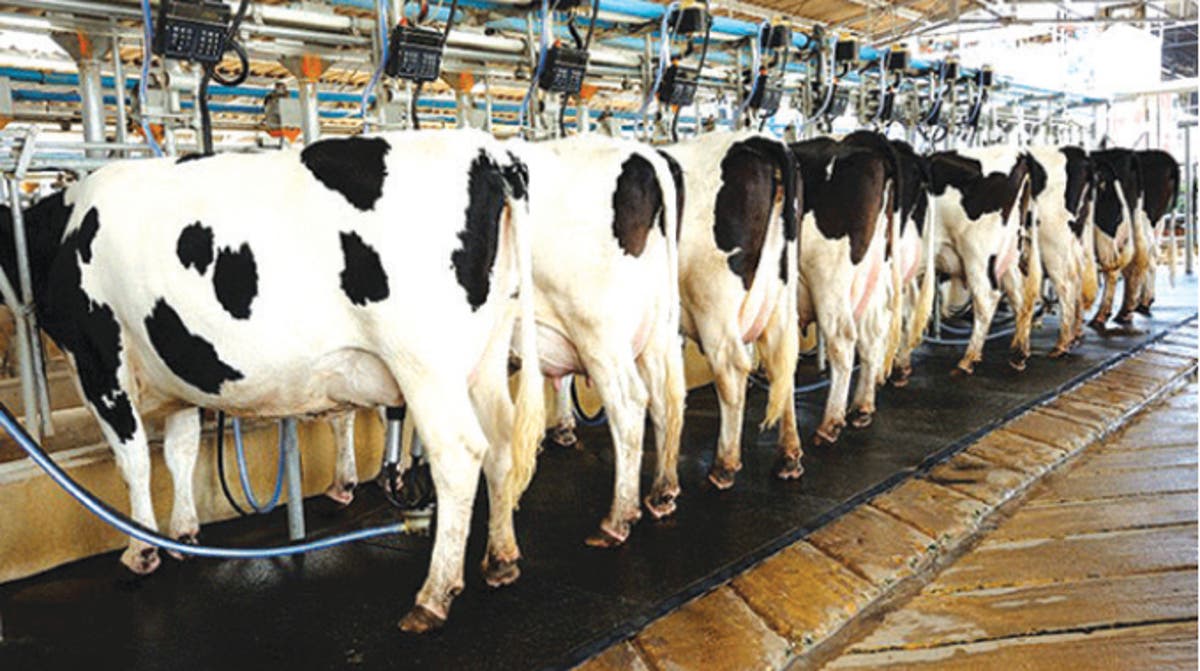
By Chipo Tachiona
Raising cows for the purpose of producing milk — either for domestic consumption or for commercial purposes — is known as dairy farming.
Like all mammals, cows produce milk to nourish their young ones. The mother cow’s mammary glands will generate enough milk if her calf is fed on a regular basis to meet its entire nutritional needs.
A calf that consumes more grass and other feed will eventually stop nursing. Consequently, a cow will stop producing milk when it is no longer required.
However, dairy farmers can make the cows continue to produce milk by milking them twice or three times a day. Some cow breeds are especially good at producing milk; they can yield between 10 litres and 15 litres a day. The four nipples, or teats, on a cow’s large, round udder, which is found on its underside, are squeezed to release milk that can be stored.
Milking was formerly done by hand, but on contemporary dairy farms, machines with suction hoses do the work more quickly and affordably.
https://www.sundaymail.co.zw/getting-the-best-from-dairy-farming
Factors affecting milk production
The inability to predict the quantity and quality of milk produced over time is one of the main causes of the dairy industry’s volatility. Despite their best efforts, farmers are unable to control too many factors. Both the government and the industry make every effort to forecast milk production with precision, and everyone hopes for exceptionally high-quality milk. However, none is guaranteed, and this uncertainty has influenced how the market and the industry have developed.
A cow’s milk production is primarily determined by its surroundings. The cow will yield more milk if it is more comfortable, so comfort is everything. A cow is less productive the less comfortable it is. Below are some of the factors that determine milk production.
Weather and climate: Cows are less stressed in temperate climates with milder seasons than in those with more extreme weather patterns. Weather and climate are closely related to geography. The two biggest influencing factors are heat and humidity. Even in hot seasons, cows have a chance for cover if nighttime temperatures drop. On the other hand, they will consume less feed and produce less milk if they are denied the opportunity to cool down.
Feed: The quantity and quality of feed are influenced by weather and climate, and this in turn affects the quantity and quality of milk produced. What farmers can use can be greatly impacted by feed availability and price.
Accommodation: Cows are more productive when they have clean, spacious grazing areas, cosy places to rest, and attentive farmers.
Species: The amount and quality of milk produced by various breeds of cows varies naturally. Holstein/Friesian, also recognized as the black and white, is by far the supreme leading dairy cattle breed in Zimbabwe, establishing more than two thirds of the country’s dairy cattle population. This is followed by Jersey, which accounts for about 10% of this population.
Age: In general, younger cows yield more milk than older ones. Farmers are always faced with the choice of whether to continue milking a cow or to slaughter it for beef and replace it with a younger one when doing so is more cost-effective.
Frequency of milking: When it comes to the frequency of milking cows, farmers are extremely exact. The number of milkings performed each day raises the cost of labour and supplies. However, if milking intervals are too long, both quantity and quality will decrease.
Health: Compared to healthy cows, sick cows yield less milk, and milk of lower quality.
Dry period: A cow’s milk production during lactation is influenced by the length of time it is permitted to be “dry” between calvings.
Factors affecting milk quality
The amount that a farmer is paid for the milk that a cow produces directly impacts that quality. Farmers take such extreme measures to ensure the quality of their milk because of this. The following variables affect the calibre of milk a cow produces:
Cow’s health: The quality of the milk produced by a cow is primarily determined by its health. Cows are susceptible to illnesses such as flu and colds, just like human beings. Inadequate stall conditions can also cause them to experience udder irritation or inflammation. The herd may be more susceptible to infection if it is exposed to more pathogens as a result of exposure to mud, manure, and runoff.
The best indicators of cow health are somatic cell counts. Elevated somatic cell counts in milk are indicative of a higher concentration of white blood cells, which suggests that the cow is battling an illness. The fat and protein content of milk can be broken down by different kinds of somatic cells. This lowers the milk’s quality and may result in a pay reduction.
Diet: A cow’s diet influences both the amount and quality composition of the milk it produces. When food is scarce, both will be negatively impacted. Farmers can better modify feed to improve the components of milk when feed is abundant. A better composition translates into a higher income.
Milk handling: How milk is handled after it leaves the cow also has an impact on its quality. Since milk is a naturally favourable environment for bacteria to flourish, measurements of the number of bacteria present during processing can reveal whether the milk was handled carefully and swiftly cooled. The bacteria count will decrease with cleaner equipment and faster milk cooling.
Milk and its derivatives have a neutral pH, high moisture content, and are nutrient rich. As a result, milk readily encourages the development and spread of bacteria and other pathogens. Salmonellosis, brucellosis, listeriosis, tuberculosis, and gastrointestinal issues can all be brought on by contaminated milk. Many factors, including the milking environment, wind, milking equipment, feeds, soil, dung, farm workers, and housing, can contaminate milk.
While contamination of milk can happen at different points in time, such as during processing or at the market, handling, transportation, or storage on the farm, most of the contamination is typically related to the farm. As a result, implementing sensible quality control procedures at the farm level is crucial.
According to official data released by the Ministry of Agriculture, Fisheries, Water, and Rural Development’s Dairy Services Division, successful public-private partnerships have increased Zimbabwe’s milk output in the first seven months of 2023 from 51.2 million litres to 54 million litres, a 5.9% increase.
Zimbabwe Association of Dairy Farmers chief executive Paidamoyo Chadoka said that milk volumes were continuing to increase with production expected to grow by 20% to 108m litres by the end of 2023.
With the growth, Zimbabwe could be well on its way to achieving milk self-sufficiency. The country requires between 120m and 130m litres of milk a year.
Chipo Tachiona is Farmyard Investments director
Word from the market is a column produced by the Agricultural Marketing Authority (AMA) to promote market-driven production. Feedback cchiduku@ama.co.zw or WhatsApp/Call +263781706212.





